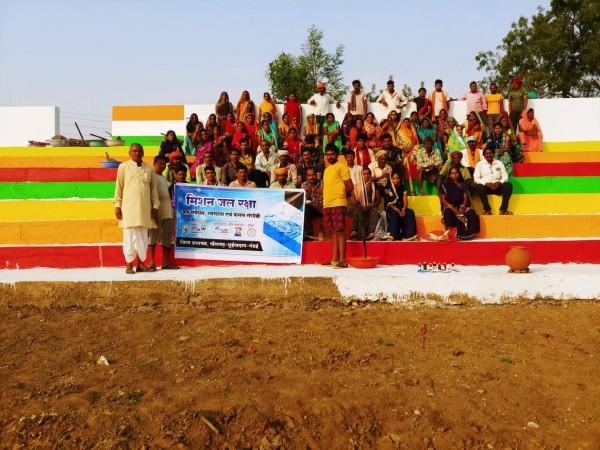
As concerns about water scarcity grow worldwide, Chhattisgarh's Rajnandgaon district is making significant strides in water conservation under the leadership of District Collector Sanjay Agrawal and Suruchi Singh, the CEO of Zila Panchayat. Recognizing the urgency of addressing water issues in a region where three out of four blocks have been classified as "semi-critical" by the Central Groundwater Board, Mission Jal Raksha is a pioneering initiative that blends advanced technology with grassroots community involvement.
Mission Jal Raksha is a comprehensive water conservation project that uses Geographic Information System (GIS) technology to identify and develop recharge structures across the district. This initiative, which is primarily funded by the Mahatma Gandhi National Rural Employment Guarantee Act (MGNREGA), also involves a convergence of efforts from various sectors, including agriculture, horticulture, the National Rural Livelihood Mission (NRLM), NGOs, and local industries.

Suruchi Singh's leadership has been instrumental in the success of this mission. Community engagement plays a crucial role, particularly through the involvement of women-led Self-Help Groups (SHGs), which has transformed the initiative into a "Jal Andolan" or water movement. Emphasizing the power of "Nari Shakti se Jal Shakti" (Women's Empowerment for Water Empowerment), local women lead efforts in building water recharge structures and promoting sustainable water practices.

To date, more than 75,000 water conservation structures have been built under Mission Jal Raksha. These include mini percolation tanks, staggered trenches, contour trenches, and various other types of recharge facilities. Remarkably, 70% of the labor force involved in these projects consists of women, highlighting the critical role of female empowerment in this mission.
The results have been remarkable. The construction of these structures has increased the district's water-holding capacity by 3 lakh cubic meters, contributing to a year-on-year increase of 2.73 meters in groundwater levels between 2022 and 2023. This increase in groundwater has reduced the risk of over-extraction and ensured a stable, sustainable supply of water for irrigation, drinking, and other domestic uses.

Serious efforts have been made to educate farmers on efficient water management techniques and crop diversification, encouraging the adoption of non-water-intensive crops such as maize, soy, and pulses. The mission has also seen the planting of over 248,000 trees, supported by collaborations with private companies, NGOs, and local communities.
Community participation has been the cornerstone of Mission Jal Raksha. Singh and her team have organized more than 5,300 public consultations across 1,645 villages to gather feedback and build local ownership of the project. These meetings have empowered villagers to contribute to groundwater management plans and actively participate in the conservation efforts.

The initiative has also forged partnerships with organizations like Abis Export Group, ACWADAM, UNICEF, and the Red Cross Society, among others, further enhancing its impact. The involvement of these organizations, along with the massive community support, has ensured that Mission Jal Raksha is not just a government program but a true people's movement.
Rajnandgaon has now become a model of sustainable water conservation. The success of Mission Jal Raksha is a testament to what can be achieved when technology, community involvement, and strong leadership come together for a common cause. This initiative not only addresses the immediate water challenges in the district but also sets a precedent for similar efforts across India.

















